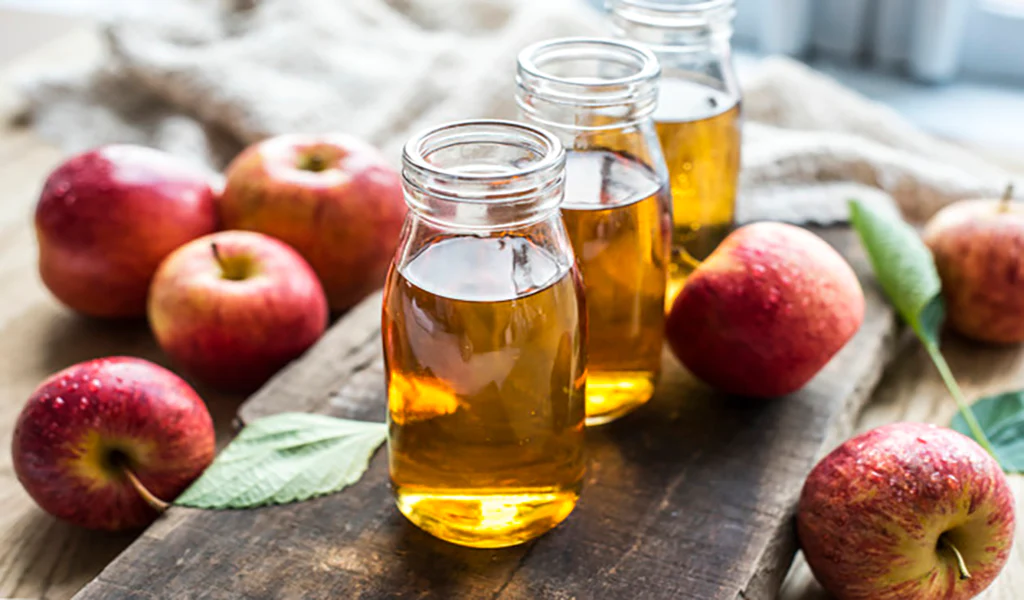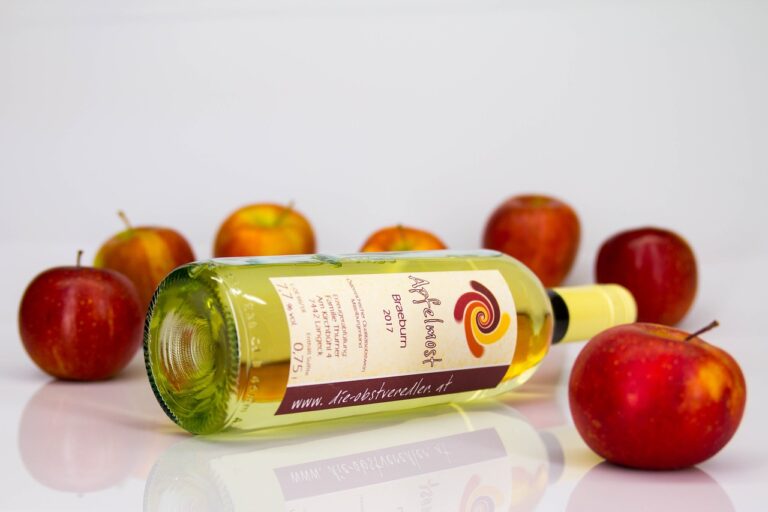Apple cider vinegar is a pantry staple for many and is a popular ingredient in marinades, sauces, and even beverages, apple cider vinegar is utilized in cooking and baking.
But still, it is very uncommon for anyone to consume the whole bottle in one go.
So, how do you store that remaining apple cider vinegar? Can we refrigerate it? Or does refrigerating ruin the apple cider vinegar?
In this article, we will try to answer these questions, in addition to providing storage advice to prolong the quality and shelf life of apple cider vinegar.
Does Apple Cider Vinegar Become Ruined if It’s Refrigerated?
Refrigerating apple cider vinegar does not ruin it.
In fact, it can help prolong its shelf life and maintain its quality.
However, it’s not necessary to refrigerate ACV, as it has a high acetic acid content that acts as a natural preservative.
When stored properly, unopened apple cider vinegar can last for several years, while opened bottles can last for up to two years.
To maintain the quality of your ACV, store it in a cool, dry place away from direct sunlight, and keep the bottle tightly sealed after each use.
Make sure to store it in a glass container, as plastic may react negatively with the acid content in the vinegar.
Refrigeration may cause the vinegar to become cloudy or form sediment at the bottom of the bottle, but this doesn’t affect its quality or safety.
Simply shake the bottle before using it to redistribute the sediment.
If you prefer a clearer ACV, you can filter it through a coffee filter or cheesecloth before using it.
How to Store Apple Cider Vinegar Safely at Home
Here are some of the tips to properly store apple cider vinegar (ACV) at home:
· Choose the right container
Use a glass container or bottle for storing ACV, as plastic may react with the acid content in the vinegar. Ensure the container has a tight-fitting lid to prevent exposure to air.
· Keep the bottle sealed
After each use, tightly seal the ACV container to minimize air exposure and maintain its quality.
· Store in a cool, dark place
Find a cool, dark, and dry spot in your home, such as a pantry or cupboard, to prevent temperature fluctuations and light exposure from affecting the vinegar’s properties.
· Keep away from direct sunlight
Avoid storing ACV near windows or other sources of direct sunlight, as it can deteriorate the vinegar’s quality over time.
· Maintain a stable temperature
Ensure the storage area has a consistent temperature, as fluctuations can negatively impact the quality and shelf life of ACV.
· Optional refrigeration
While not necessary, you can choose to refrigerate ACV to prolong its shelf life and maintain its quality.
Be aware that refrigeration may cause the vinegar to become cloudy or form sediment, which is normal and doesn’t affect its quality.
· Shake or filter before use
If sediment forms at the bottom of the bottle or the vinegar becomes cloudy, simply shake the bottle to redistribute the sediment or filter the ACV through a coffee filter or cheesecloth before using it.
By following these steps, you can ensure proper storage of apple cider vinegar at home and enjoy its numerous benefits for an extended period.
Changes In Apple Cider Vinegar Over Time
Over time, apple cider vinegar can undergo several changes in its appearance and composition, but these alterations don’t necessarily indicate a decline in quality or safety.
As ACV ages, it may become cloudier due to the formation of a sediment known as the “mother,” which consists of beneficial bacteria, enzymes, and proteins.
This natural occurrence is a sign of raw, unfiltered vinegar and can actually be a desirable trait for those seeking its probiotic benefits.
Additionally, exposure to air, temperature fluctuations, and light can cause the vinegar’s color to darken or its aroma to become more potent.
The nutritional value and shelf life of apple cider vinegar aren’t dramatically impacted by these modifications, but they may influence how it tastes or contributes to a dish.
Despite these changes, ACV’s high acetic acid content acts as a natural preservative, enabling it to maintain its shelf life and effectiveness for up to two years when opened and even longer when unopened.
You may smell, taste, and even test apple cider vinegar to be sure it will still function well in your recipe before using it.
Though some goods with apple cider vinegar may have an expiration date, many producers state that the product is safe to use even after this date.
FAQs
1. Is it necessary to refrigerate apple cider vinegar?
It’s not necessary to refrigerate apple cider vinegar, as its high acetic acid content acts as a natural preservative, protecting it from spoilage.
When stored properly in a cool, dark place with a tightly sealed lid, unopened apple cider vinegar can last for several years, while opened bottles can last for up to two years.
2. How do I know apple cider vinegar has gone bad?
Naturally, tasting the vinegar will reveal whether it has gone bad.
It’s still okay to use vinegar if it tastes sour and vinegary.
But, if it tastes sweet or like alcohol, it should be discarded because the fermentation process, also known as age, has already started.
3. Can I freeze apple cider vinegar?
Yes, apple cider vinegar can be frozen for up to a year.
The best way to do this is to use an ice cube tray to freeze vinegar into cubes that can later be placed in a bag for storage.
4. Does apple cider vinegar goes bad or expires?
Apple cider vinegar doesn’t actually go bad if it’s kept under the right conditions, however, it could vary in flavor and appearance over time.
5. What is the cloudy stuff in apple cider vinegar?
The cloudy stuff can be one of two items or a combination of the two, either vinegar mother or a small amount of apple sediment.
The swirly material at the bottom of the bottle is typically the vinegar mother, which develops over time.
However, it can be filtered out and the apple cider vinegar is still safe for consumption.









